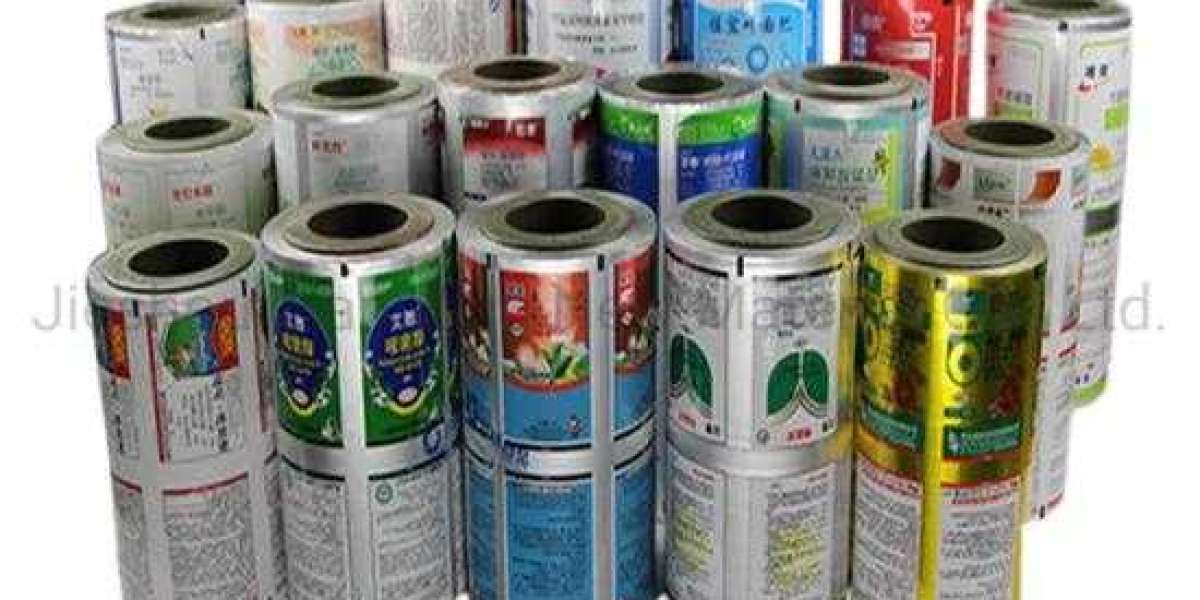In recent years, the packaging industry has witnessed a paradigm shift toward more sustainable, efficient, and visually appealing solutions. Among these innovations, Printed BOPP Films (Biaxially Oriented Polypropylene) have emerged as a standout option, garnering significant attention from manufacturers and consumers alike. Renowned for their versatility, durability, and aesthetic appeal, printed BOPP films are revolutionizing the way products are packaged and presented.
What Are Printed BOPP Films?
Printed BOPP films are polypropylene-based materials that are stretched biaxially to enhance their strength, clarity, and barrier properties. These films are then printed with high-quality graphics, logos, or designs to create visually striking packaging solutions. The combination of durability and customization makes these films an excellent choice for industries ranging from food and beverages to cosmetics and pharmaceuticals.
Benefits of High-Quality Printed BOPP Films
1. Superior Print Quality
One of the primary reasons behind the rising popularity of High quality printed BOPP film is their exceptional printability. Advanced printing technologies, including rotogravure and flexographic printing, enable manufacturers to achieve vibrant and detailed designs that captivate consumers' attention on retail shelves.
2. Enhanced Barrier Properties
Printed BOPP films offer excellent moisture, grease, and oxygen barrier properties, ensuring that the packaged product remains fresh and intact. This is particularly crucial for food products, where maintaining quality and extending shelf life are paramount.
3. Eco-Friendly Options
Many printed BOPP film manufacturers are now producing eco-friendly variants, which are recyclable and use fewer resources during production. These sustainable options align with the global push toward greener packaging solutions.
4. Cost-Effectiveness
Despite their advanced features, printed BOPP films are cost-effective compared to traditional packaging materials. Their lightweight nature reduces transportation costs, while their durability minimizes the risk of product damage.
5. Customizability
From matte to glossy finishes, and from transparent to opaque designs, printed BOPP films offer endless customization possibilities. This flexibility allows brands to create packaging that resonates with their identity and appeals to their target audience.
Applications of Printed BOPP Films in Packaging
1. Food Packaging
The food industry is one of the largest consumers of printed BOPP films for packaging. These films are widely used for snack packaging, bakery items, fresh produce, and confectionery. Their ability to preserve flavor and texture while offering eye-catching designs makes them a preferred choice.
2. Beverage Labels
Printed BOPP films are extensively used as labels for beverages, including bottled water, soft drinks, and juices. Their resistance to moisture ensures that the labels remain intact even under wet conditions, enhancing brand visibility.
3. Cosmetics and Personal Care
The cosmetics industry values high-quality printed BOPP films for their aesthetic appeal and protective features. These films are used for wrapping beauty products, offering both a premium look and enhanced protection against environmental factors.
4. Pharmaceuticals
In the pharmaceutical sector, printed BOPP films are utilized for blister packaging and overwrapping. Their clarity and ability to securely contain products make them ideal for medical and healthcare applications.
5. Retail and E-Commerce
With the surge in e-commerce, printed BOPP films have found a niche in retail packaging. They are used for packaging apparel, electronics, and other consumer goods, providing an appealing and protective outer layer.
Why Are Printed BOPP Films the Future of Flexible Packaging?
The demand for flexible packaging is surging, driven by consumer preferences for lightweight, durable, and sustainable solutions. Printed BOPP film for packaging meet all these criteria while offering superior aesthetic value. The rapid advancements in printing technology further enhance their appeal, allowing manufacturers to create packaging that not only protects but also markets the product effectively.
Additionally, the ability to integrate eco-friendly practices into the production of BOPP films aligns with the sustainability goals of many brands. As environmental concerns continue to influence purchasing decisions, products packaged in recyclable or biodegradable BOPP films are likely to gain a competitive edge.
Key Trends in Printed BOPP Film Manufacturing
Digital Printing Revolution The advent of digital printing has allowed Printed BOPP film manufacturers to produce smaller batches of customized designs without compromising on quality. This trend caters to niche markets and seasonal campaigns.
Innovative Coatings Manufacturers are now incorporating specialized coatings to enhance the functionality of printed BOPP films. For example, anti-fog coatings for food packaging and UV-resistant coatings for outdoor applications.
Sustainability Initiatives To meet the growing demand for eco-friendly packaging, manufacturers are investing in recyclable BOPP films and reducing the carbon footprint of their production processes.
Interactive Packaging Some brands are incorporating QR codes and AR (Augmented Reality) features into their printed BOPP films, offering consumers a more interactive and engaging experience.
Choosing the Right Printed Film Manufacturer
Selecting a reliable manufacturer is critical to ensuring the success of your packaging solution. Look for manufacturers with a proven track record of delivering high-quality printed BOPP films that meet industry standards. Factors to consider include:
- Printing Technology: Advanced printing capabilities ensure vibrant and precise designs.
- Sustainability Practices: Opt for manufacturers who prioritize eco-friendly production methods.
- Customization Options: Ensure that the manufacturer can cater to your specific design and functionality requirements.
- Client Testimonials: Check reviews and feedback from other businesses to gauge the manufacturer’s reliability and quality.
Conclusion
As the demand for innovative and sustainable packaging solutions continues to grow, printed BOPP films are proving to be a game-changer in the flexible packaging industry. Their versatility, durability, and visual appeal make them a preferred choice for brands looking to enhance their product’s marketability while maintaining cost-efficiency. With advancements in printing technology and a focus on eco-friendly practices, the future of printed BOPP films looks incredibly promising.
Frequently Asked Questions (FAQs)
1. What makes printed BOPP films better than traditional packaging materials?
Printed BOPP films offer superior print quality, enhanced barrier properties, and sustainability options, making them a more versatile and cost-effective choice compared to traditional materials like paper or aluminum.
2. Are printed BOPP films eco-friendly?
Yes, many manufacturers produce recyclable printed BOPP films, and some even offer biodegradable options. Their lightweight nature also reduces transportation emissions, further contributing to their eco-friendliness.
3. Can printed BOPP films be customized for small businesses?
Absolutely. With the advent of digital printing, small businesses can order smaller quantities of customized printed BOPP films without compromising on quality, making them an accessible option for niche markets.












